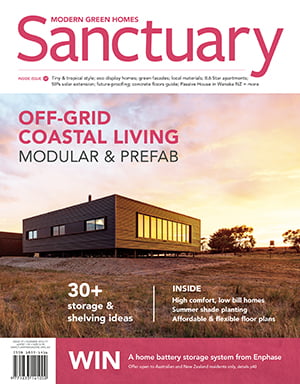Planting beyond tomorrow: selecting resilient trees for your garden
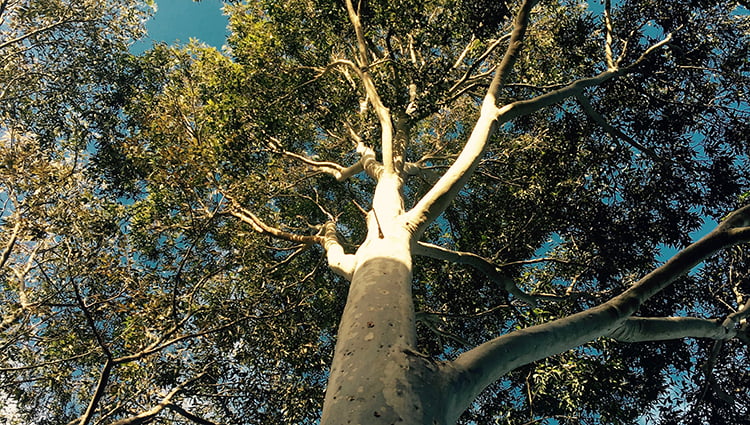
A tree planted today will (hopefully) still be thriving more than a century from now. But with many established trees already stressed by climate extremes, Michael Tanner explains how to factor in the future when selecting resilient trees for your garden.
Of all the things we do in our lives, planting a tree might be one of the most significant. It’s a leap of faith, in much the same way that having children is. A tree is absolutely independent from of us, yet can also be incredibly reliant on our ongoing care.
The tree I plant today depends on my good judgement, my attention to soil preparation, proper planting technique, staking, watering in, formative pruning, root zone protection, and so on and on. This tree will, with proper selection and care, outlive me, and my children’s grandchildren. As strawberries are to summer, a red gum is to centuries.
Trees have a lot to contend with already and yet there is more change to come. It’s hot and getting hotter. It’s dry and getting drier. Our cities offer less room for them to spread out and grow. The soil is getting harder, there’s less of it and what is there is sometimes lifeless. It’s getting windy, windier than many species would have experienced before. And sometimes it’s wet, very wet.
When Dorothea Mackellar wrote “of droughts and flooding rains” she was imbued with a sense of romantic awe. That Australia was all about wide frontiers, jewelled promise and a sense of pastoral bounty. If our country was sunburnt then, it’s positively fried, blistered and scarred now. The trouble is, factor 50 doesn’t quite work for the birches, elms and oaks. Or even the red gums.
How to predict the future
We need to look to the future for our tree choices, not the past, and climate modelling and data can help. Using data widely available from the Bureau of Meteorology, the United Nations Intergovernmental Panel and Climate Change (IPCC) and the government’s Climate Change in Australia website, we can make an educated prediction of what our local climate might look like in 2030, 2050 or 2090. Looking forward 60-plus years is an appropriate timeframe when thinking about trees, because this accounts for the establishment, juvenile and mature periods. In effect, when planting trees we are setting them up to still provide shade to our fellow citizens sometime in the early 2100s.
Resilient trees for your location
Australia is still a wide brown land with huge variations in climate and geology. The challenge in selecting trees for a climate-changed future is to really know where you are; the environment, physical site conditions and what these might look like in the future. This is where the Climate Change in Australia website is invaluable. It allows you to make an analogous comparison between the place you are now and another town with a climate that is currently very similar in temperature and rainfall to what yours may look like in the future (either 2030, 2050 or 2090).
As an example, Melbourne’s 2050 climate is projected to be more like the current climate of Wagga Wagga or Adelaide. Knowing this can help me forecast what my garden microclimate might feel like in a climate-changed future. Hotter and drier than Melbourne, Adelaide has 20 per cent less rainfall and mid-range, annual average temperatures that are 2.2 degrees warmer. With this in mind, I can look at Adelaide or Wagga Wagga for planting ideas, and to discover which tree species are currently performing well in those locations and are tolerant of the climatic conditions. With this knowledge, I might now choose tree species like ghost gums, round-leaved moort or bottle trees as my future trees for Melbourne.
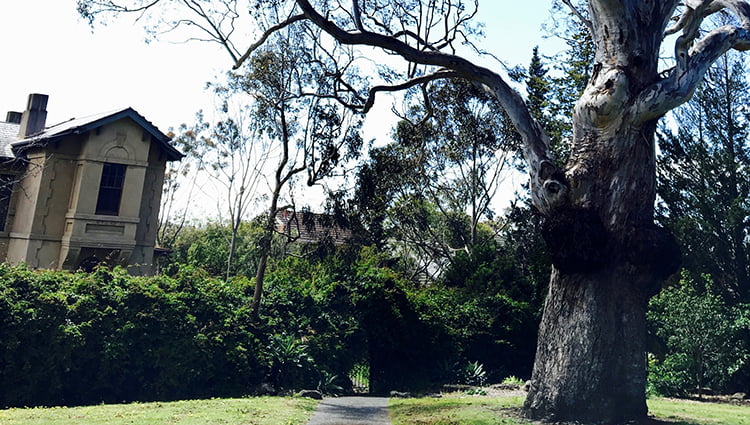
Observe the trees around you
Take a walk around your local neighbourhood and look for trees that are performing really well and those that are failing or have failed. Cast your mind back to the most recent significant drought. For me, that was the decade through to 2010 in Melbourne. I watched as hundreds of exotic ornamental trees, like silver birch, elms and maples, gave up the ghost. I also noted the trees that survived, even thrived. Some surprised me, like Capital pears.
Now imagine the trees in your garden or neighbourhood today – do they suit the climate or are they already showing signs of stress? What about the existing soils – how might that change with less rainfall and higher temperatures? Using the official predictions, you might find your garden will be drier, more prone to wind erosion, hold fewer nutrients or be baked hard, making drainage and root penetration more difficult.
The City of Melbourne’s urban forest strategy is a great resource for understanding environmental stress on urban trees. Melbourne has identified that 22 per cent of its 60,000 urban trees are either reaching the end of their life or are highly vulnerable to changing climatic conditions. The city is embarking on a substantial tree replacement program, choosing new species, such as Agathis robusta(Queensland kauri) to replace aged and declining Dutch elms. This is one example of thinking outside the box when it comes to choosing future trees. It’s possible your city or town has undertaken a similar study.
Investigate similar climate zones
If you get the chance to go someplace else for a break, look at the trees that are performing well there. If the climate is somewhat similar to what your present home city might become – like say Perth in 2050 becoming more like Grafton, Parkes or Toowoomba now, or Sydney in 2050 becoming more like Brisbane – then make some notes, take some pictures and ask questions.
I was recently in Cotton Tree on the Sunshine Coast. One of my favourite individual trees is in a park by the river: a graceful, sweeping Melaleuca quinquenervia (broad-leaved paperbark) with the most gorgeous flaking salmon-hued bark. It is potentially a perfect tree for a coastal garden in Sydney. The jacarandas of Grafton are an obvious choice for Perth, while the callistemons of Adelaide’s boulevards are perfectly suited to the compacted soils and drought conditions of Melbourne’s west. Of course there’s much more to tree selection than just this, but looking elsewhere for future tree inspiration is a pretty good idea.
Tree resilience research
To say what a tree ‘likes and dislikes’ would be to anthropomorphise too much. However I think it’s fair to say the voiceless message of trees is ‘tolerance’. On that level, it seems trees and humans are quite similar. We often tolerate more than we might first let on, only to be completely intolerant of the simplest things, like changes to routine. More than anything else, it is the routine of climate that is so rapidly changing for trees. The evolutionary nature of long-lived organisms, like trees, means they’re often very slow to adapt to change, sometimes too slow, and our changing climate probably won’t wait for them.
Trevor Seppings is a native tree expert who is working on developing tree species that aren’t traditionally grown in cultivation. As part of his work for the Australian Garden at the Royal Botanic Gardens in Cranbourne, he’s looking to develop tree species for botanic gardens around the country, and for broader cultivation, that may be better suited to the climate-changed future we’re facing. Trevor believes climate conditions in south eastern Australia may become such that mallees and ghost gums (typically more suited to dry inland areas) will perform very well. But there’s more research to be done and even anecdotal observation is a valuable reference point for tree selection.
Keep listening
“I speak for the trees, for the trees have no tongues.” The Lorax, Dr Seuss.
Like many people of my vintage I grew up on a diet of Dr Seuss’ magical, poetic, sometimes dark, but always enlightening stories. I first learnt about the environment and my role as a steward of it from the Lorax, its lyricism giving voice to my deepest thoughts about my role as a gardener, designer and citizen.
When we stop to listen, the trees will tell us of their histories, through cracked bark and broken limb, in lifted root balls and lost crowns, and through the season-on-season march of carbon, oxygen and water through their cambium.
At times I see myself as a translator, positioned between the somewhat transient daily lives of humans and the seasons-measured lives of plants, especially trees. Even though the trees don’t speak, I reckon we can hear their stories. And our role as gardeners is to translate the message of their lives both for us and for our wider community.
More outdoor stories
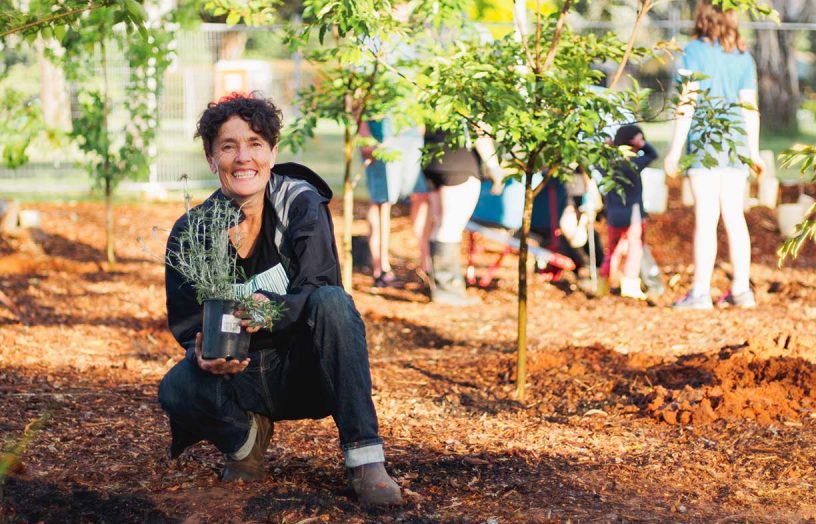 Outdoors
Outdoors
Pocket forests: Urban microforests gaining ground
Often no bigger than a tennis court, microforests punch above their weight for establishing cool urban microclimates, providing wildlife habitat and focusing community connection. Mara Ripani goes exploring.
Read more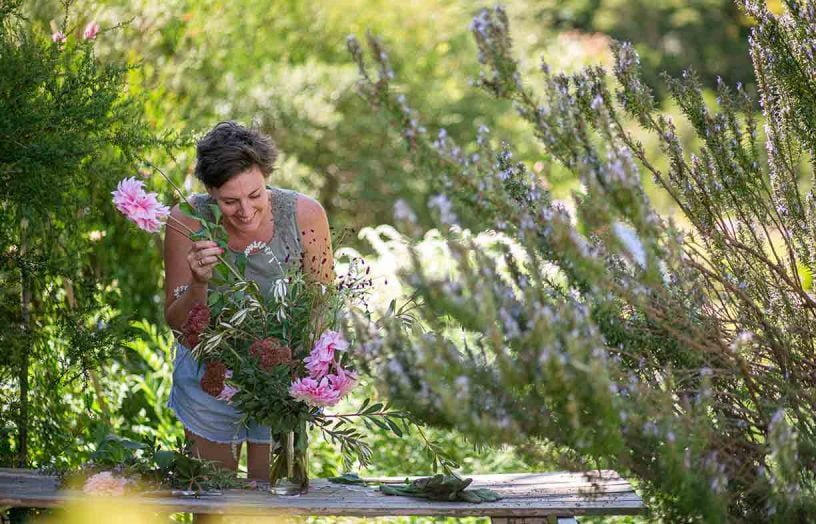 Outdoors
Outdoors
Nourished by nature: Garden design for mental health and wellbeing
There’s plenty of evidence that connection with nature is beneficial for both mind and body. We speak to the experts about designing gardens for improved mood and wellbeing, and what we can do at home to create green spaces that give back in a therapeutic way.
Read more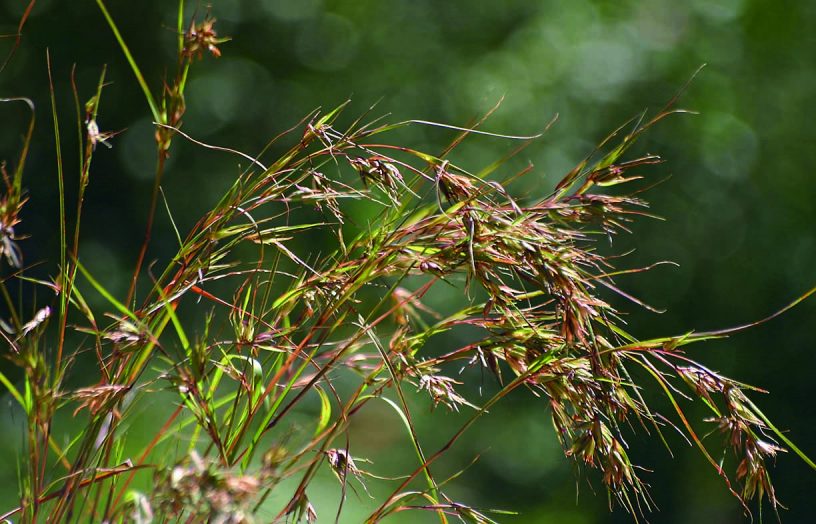 Outdoors
Outdoors
In the line of fire: Plant list
Download a list of popular native species to accompany our Sanctuary 51 article 'In the line of fire: Garden design to reduce the threat of bushfire'.
Read more

